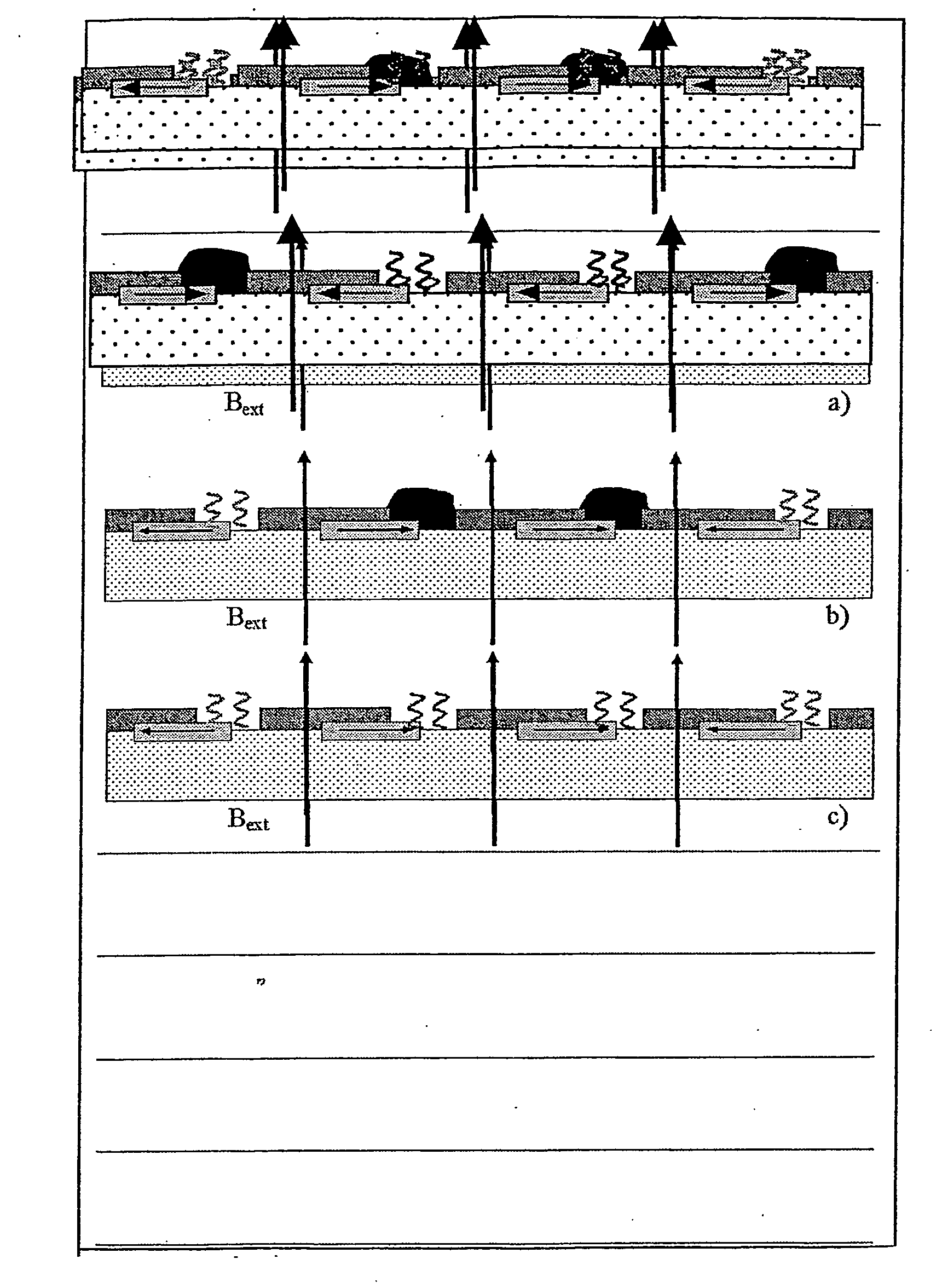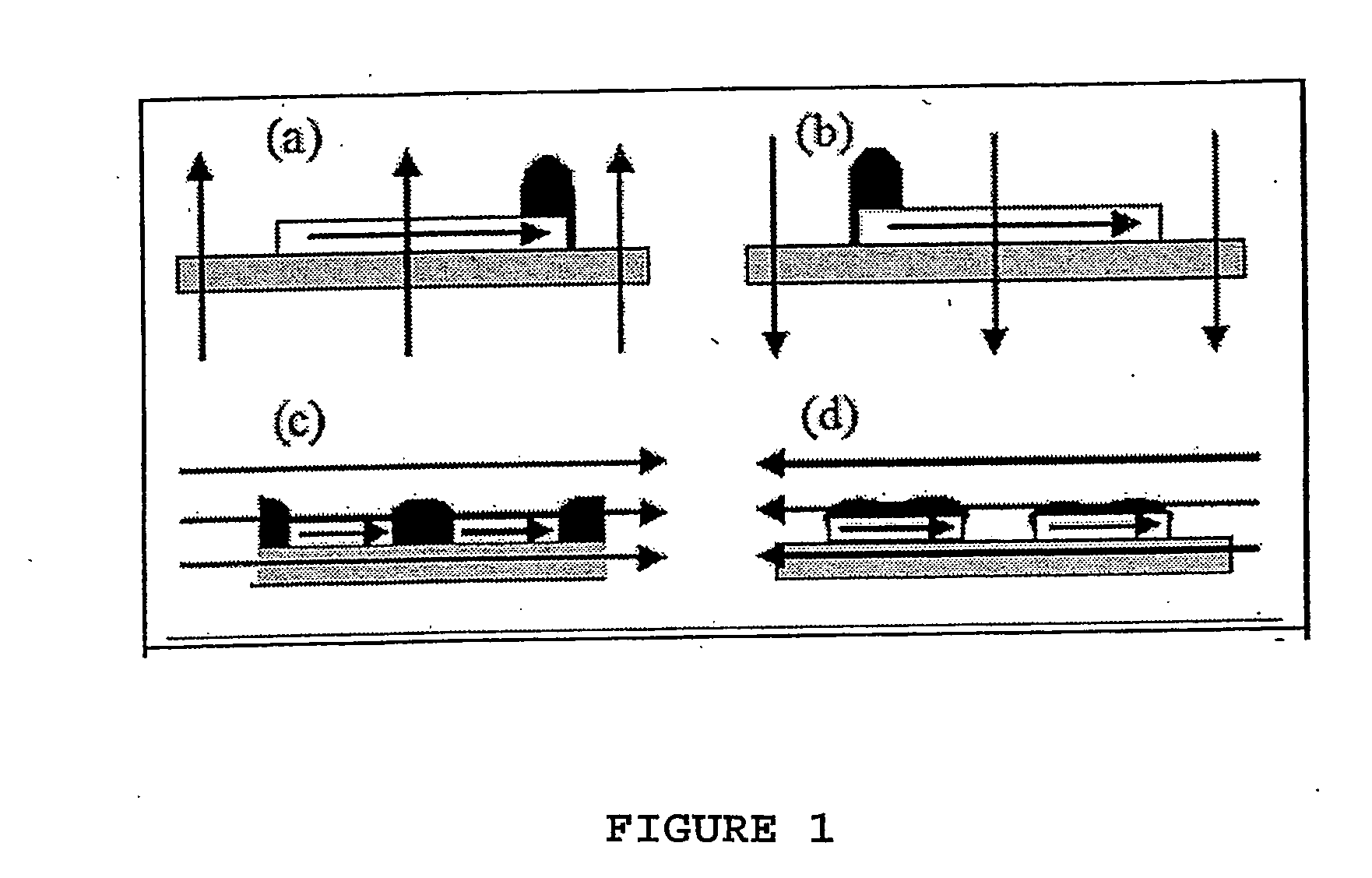Programmable Self-Aligning Liquid Magnetic Nanoparticle Masks and Methods for Their Use
a liquid magnetic nanoparticle and mask technology, applied in the field of magnetic nanoparticle masks, can solve the problems of only useful methods, inability to use more delicate materials, and inability to achieve self-assembly techniques
- Summary
- Abstract
- Description
- Claims
- Application Information
AI Technical Summary
Benefits of technology
Problems solved by technology
Method used
Image
Examples
example 1
Materials and Methods
[0054] Experiments were performed using Silicon or Pyrex substrates patterned with 100 nm thick Cobalt bits by conventional photolithographic lift-off process In the lift-off process, an image is defined by exposing photoresist to ultraviolet radiation through a patterned optical mask. The photoresist pattern is developed, and then Cobalt is evaporated onto the patterned wafer. Finally, the remaining photoresist is stripped to produce a pattern of Cobalt film. While negative or multi-layer resists are frequently utilized to obtain an undercut resist profile, positive Shipley 1813 photoresist yielded satisfactory results. Individual bits in these experiments have a planar dimension of 4 pm by 20 pm. Aqueous based ferrofluid domain detection fluid purchased from Ferrotec was applied to the substrate in varying concentrations to determine optimal masking conditions. The resulting ferrofluid masks were observed in a fluidic bath using a Leica DM LFS microscope with...
PUM
| Property | Measurement | Unit |
|---|---|---|
| diameters | aaaaa | aaaaa |
| thick | aaaaa | aaaaa |
| magnetic | aaaaa | aaaaa |
Abstract
Description
Claims
Application Information
 Login to View More
Login to View More - R&D
- Intellectual Property
- Life Sciences
- Materials
- Tech Scout
- Unparalleled Data Quality
- Higher Quality Content
- 60% Fewer Hallucinations
Browse by: Latest US Patents, China's latest patents, Technical Efficacy Thesaurus, Application Domain, Technology Topic, Popular Technical Reports.
© 2025 PatSnap. All rights reserved.Legal|Privacy policy|Modern Slavery Act Transparency Statement|Sitemap|About US| Contact US: help@patsnap.com



